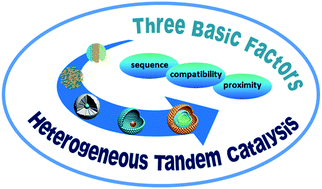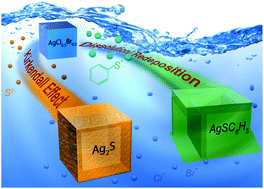Themed collection Hollow Structures for Energy Applications

Introduction to hollow structures for energy applications
Dan Wang introduces the Materials Chemistry Frontiers themed issue on hollow structures for energy applications.

Mater. Chem. Front., 2021,5, 2034-2034
https://doi.org/10.1039/D0QM90052D
Core–shell nano/microstructures for heterogeneous tandem catalysis
The three basic factors in designing an excellent core–shell heterogeneous tandem catalyst, including sequencing, proximity and compatibility of different catalytic sites, are systematically summarized and discussed.

Mater. Chem. Front., 2021,5, 1126-1139
https://doi.org/10.1039/D0QM00538J
Recent advances of hollow-structured sulfur cathodes for lithium–sulfur batteries
This review summarises recent advances of hollow-structured sulfur cathodes for high performance lithium sulfur batteries, focusing on their synthesis, structure, electrochemical performance, advantages and challenges.

Mater. Chem. Front., 2020,4, 2517-2547
https://doi.org/10.1039/D0QM00303D
Hollow carbon nanospheres: syntheses and applications for post lithium-ion batteries
We summarized the recent progress in the synthesis approaches and representative applications of hollow carbon nanospheres, especially focused on the shape control mechanism and the unique capability as anode materials of post LIBs technologies.

Mater. Chem. Front., 2020,4, 2283-2306
https://doi.org/10.1039/D0QM00313A
Hollow Co3O4 dodecahedrons with controlled crystal orientation and oxygen vacancies for the high performance oxygen evolution reaction
Hollow Co3O4 dodecahedrons with the selective exposure of the (111) facet and controlled oxygen vacancies for high performance OER.

Mater. Chem. Front., 2021,5, 259-267
https://doi.org/10.1039/D0QM00671H
Hollow multishelled structural NiO as a “shelter” for high-performance Li–S batteries
The physical and chemical confinement of polysulfides are realized with interlayers combining non-polar acetylene black and polar NiO HoMSs, resulting in a high sulfur utilization, high specific capacity and good cycling stability for Li–S batteries.

Mater. Chem. Front., 2020,4, 2971-2975
https://doi.org/10.1039/D0QM00492H
Single-crystalline CoFe nanoparticles encapsulated in N-doped carbon nanotubes as a bifunctional catalyst for water splitting
We utilize a simple heat-treatment process to synthesize single-crystalline CoFe alloy nanoparticles encapsulated in N-doped carbon nanotubes, which exhibit excellent catalytic activity and superior stability towards overall water splitting.

Mater. Chem. Front., 2020,4, 2307-2313
https://doi.org/10.1039/D0QM00126K
Polydopamine sacrificial layer mediated SiOx/C@C yolk@shell structure for durable lithium storage
Yolk@shell structured SiOx/C@C has been constructed through a polydopamine sacrificial layer mediated strategy, and the SiOx/C@C displays high specific capacity and durable cyclability in lithium storage.

Mater. Chem. Front., 2020,4, 1656-1663
https://doi.org/10.1039/D0QM00120A
Design and construction of bi-metal MOF-derived yolk–shell Ni2P/ZnP2 hollow microspheres for efficient electrocatalytic oxygen evolution
Hierarchical yolk–shell Ni2P/ZnP2 hollow microspheres are smartly synthesized, and exhibit exceptional OER performance, benefiting from their unique compositional/structural merits.

Mater. Chem. Front., 2020,4, 1366-1374
https://doi.org/10.1039/D0QM00128G
MOF derived high-density atomic platinum heterogeneous catalyst for C–H bond activation
A MOF-derived hollow nanobox with high-density under-coordinated atomic Pt sites exhibits excellent performance in direct C–H bond borylation.

Mater. Chem. Front., 2020,4, 1158-1163
https://doi.org/10.1039/D0QM00040J
Anion replacement in silver chlorobromide nanocubes: two distinct hollowing mechanisms
Mechanistic studies on the controlled conversion of silver chlorobromide nanocubes into silver-based hollow nanostructures through chemical transformations.

Mater. Chem. Front., 2020,4, 524-531
https://doi.org/10.1039/C9QM00544G
The application of hollow micro-/nanostructured cathodes for sodium-ion batteries
This work will open a new view for the design of hollow micro-/nanostructures used as cathodes for sodium-ion batteries, enclosing the superiority of this unique structure to enhance the electrochemical performance.

Mater. Chem. Front., 2020,4, 1289-1303
https://doi.org/10.1039/C9QM00674E
About this collection
Welcome to Materials Chemistry Frontiers themed collection on “hollow structures for energy applications”.
Hollow-structured materials possess attractive properties such as high specific surface area, low density, and high loading capacity, which endow them with potential applications in energy conversion and storage field. This web theme focuses on the current achievements and future perspectives on hollow-structured materials for efficient, sustainable and renewable energy. It covers synthetic methodologies, compositional and geometric manipulation, the correlation between the composition and geometric properties and their specific performance.
Guest Editor: Dan Wang (Institute of process engineering, Chinese Academy of Sciences)
More articles will be added as soon as they are published.